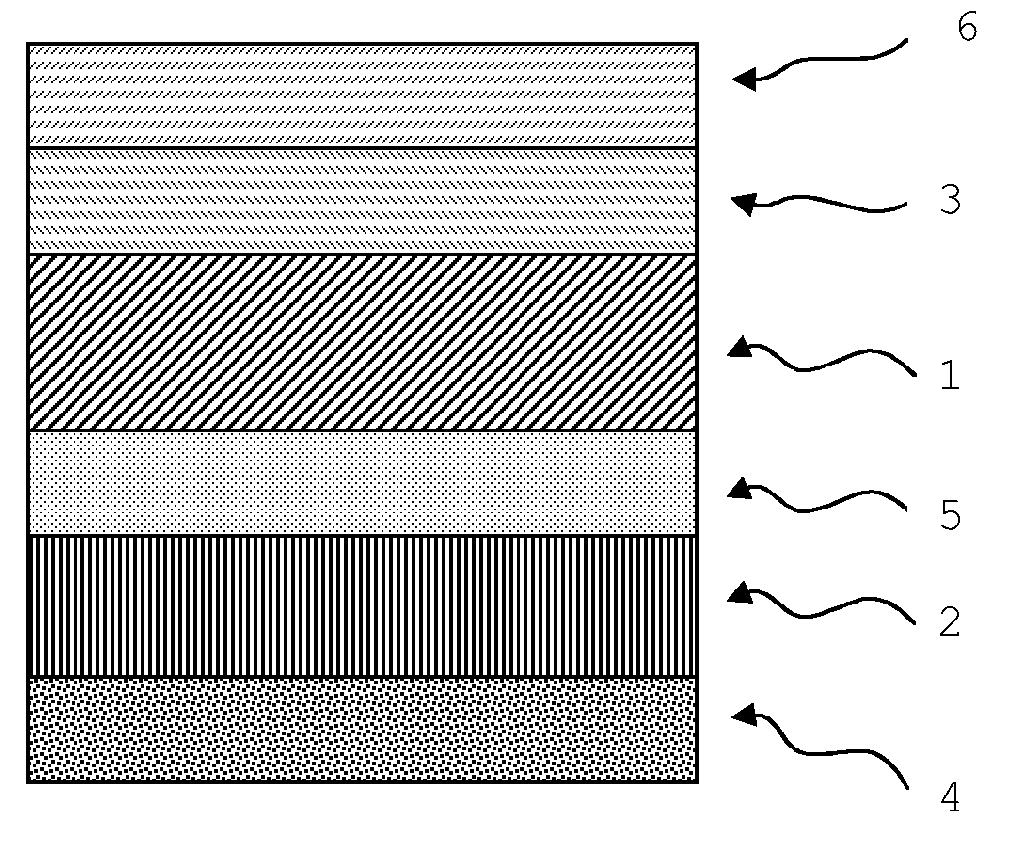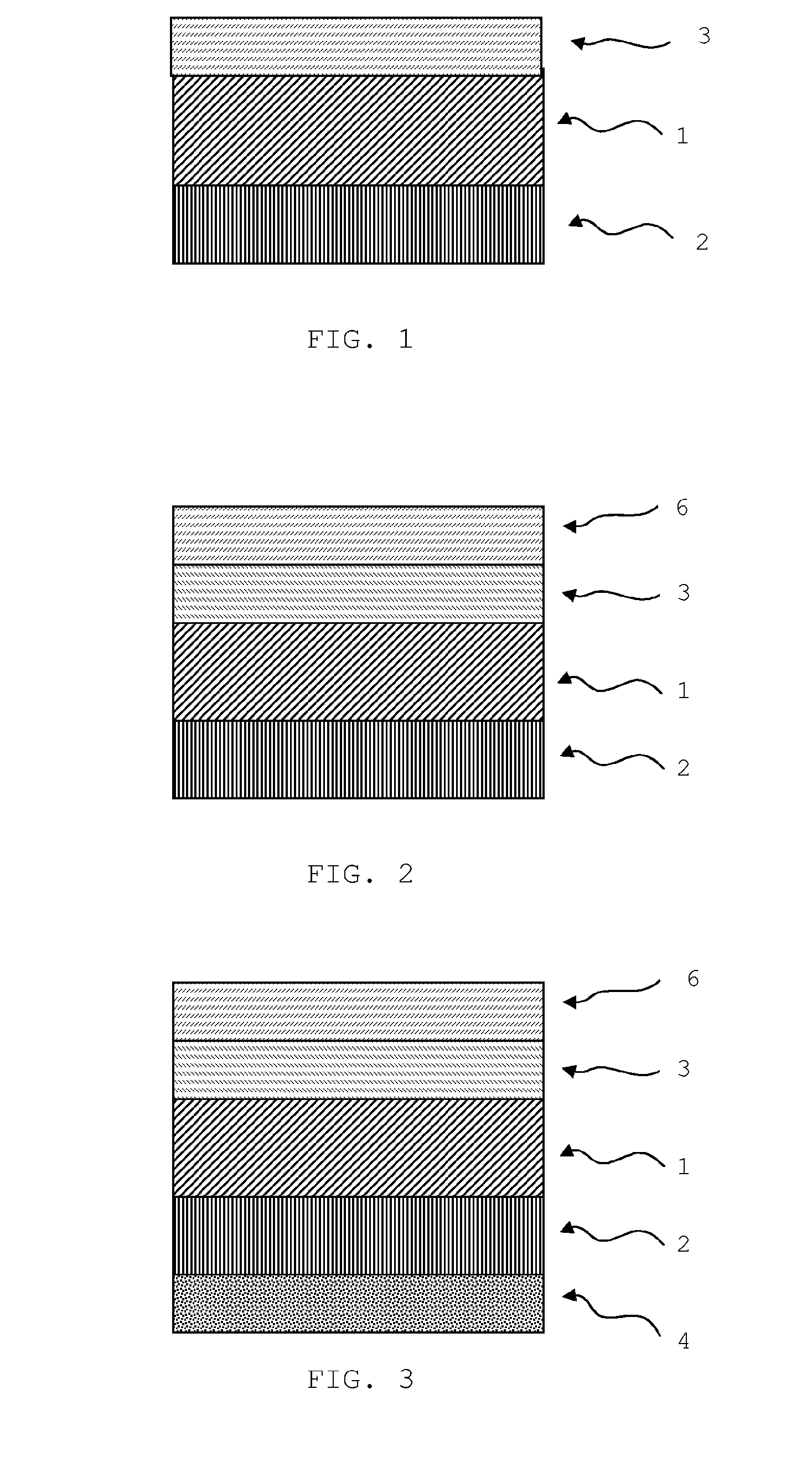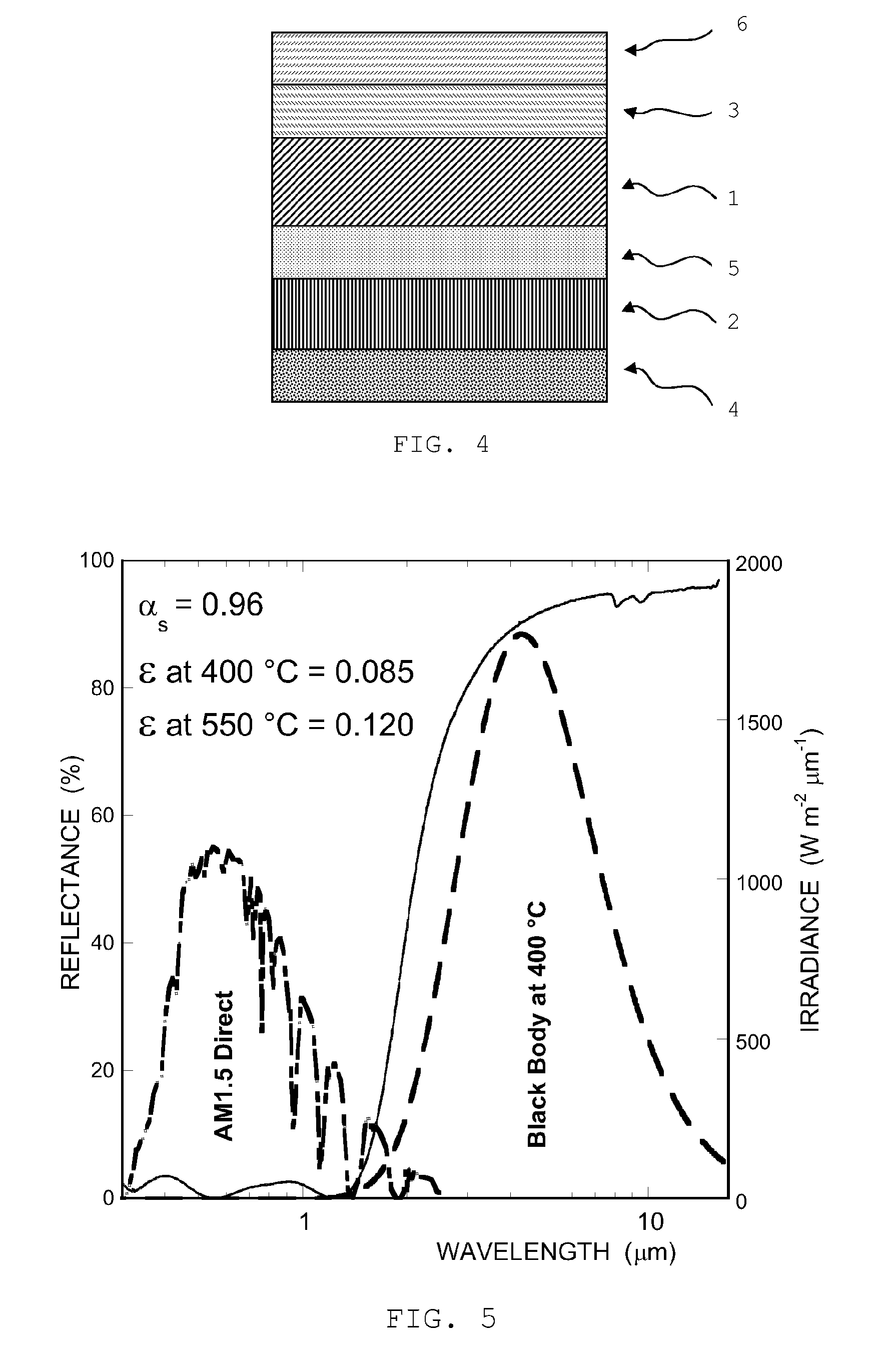Solar selective absorber based on double nitride composite material and process for its preparation
a composite material and selective absorber technology, applied in the field of selective double nitride composite material, can solve the problems of low reliability in terms of physical and chemical characteristics of the material itself, low emissivity, and loss of heat storage to the outside environment. , to achieve the effect of excellent performance, low emissivity and high absorban
- Summary
- Abstract
- Description
- Claims
- Application Information
AI Technical Summary
Benefits of technology
Problems solved by technology
Method used
Image
Examples
example 1
[0192]the material illustrated in FIG. 1 was made.
[0193]
LayerMaterialThickness1—cermettungsten nitride-aluminumabout 0.10 μmnitride2—reflecting metallic(α-phase) tungstenabout 0.13 μm3—antireflectionaluminum nitrideabout 0.08 μm
example 2
[0194]the material illustrated in FIG. 2 was made.
[0195]
LayerMaterialThickness1—cermettungsten nitride-aluminumabout 0.10 μmnitride2—reflecting metallic(α-phase) tungstenabout 0.13 μm3—antireflectionaluminum nitrideabout 0.08 μm6—2nd antireflection layerSiO2about 0.08 μm
example 3
[0196]the material illustrated in FIG. 3 was made.
[0197]
LayerMaterialThickness1—cermettungsten nitride-aluminumabout 0.10 μmnitride2—reflecting metallic(α-phase) tungstenabout 0.13 μm3—antireflectionaluminum nitrideabout 0.08 μm6—2nd antireflection layerSiO2about 0.08 μm4—adhesive adaptiveAl2O3about 0.06 μm
PUM
| Property | Measurement | Unit |
|---|---|---|
| operating temperatures | aaaaa | aaaaa |
| emissivity εh | aaaaa | aaaaa |
| emissivity εh | aaaaa | aaaaa |
Abstract
Description
Claims
Application Information
 Login to View More
Login to View More - R&D
- Intellectual Property
- Life Sciences
- Materials
- Tech Scout
- Unparalleled Data Quality
- Higher Quality Content
- 60% Fewer Hallucinations
Browse by: Latest US Patents, China's latest patents, Technical Efficacy Thesaurus, Application Domain, Technology Topic, Popular Technical Reports.
© 2025 PatSnap. All rights reserved.Legal|Privacy policy|Modern Slavery Act Transparency Statement|Sitemap|About US| Contact US: help@patsnap.com



